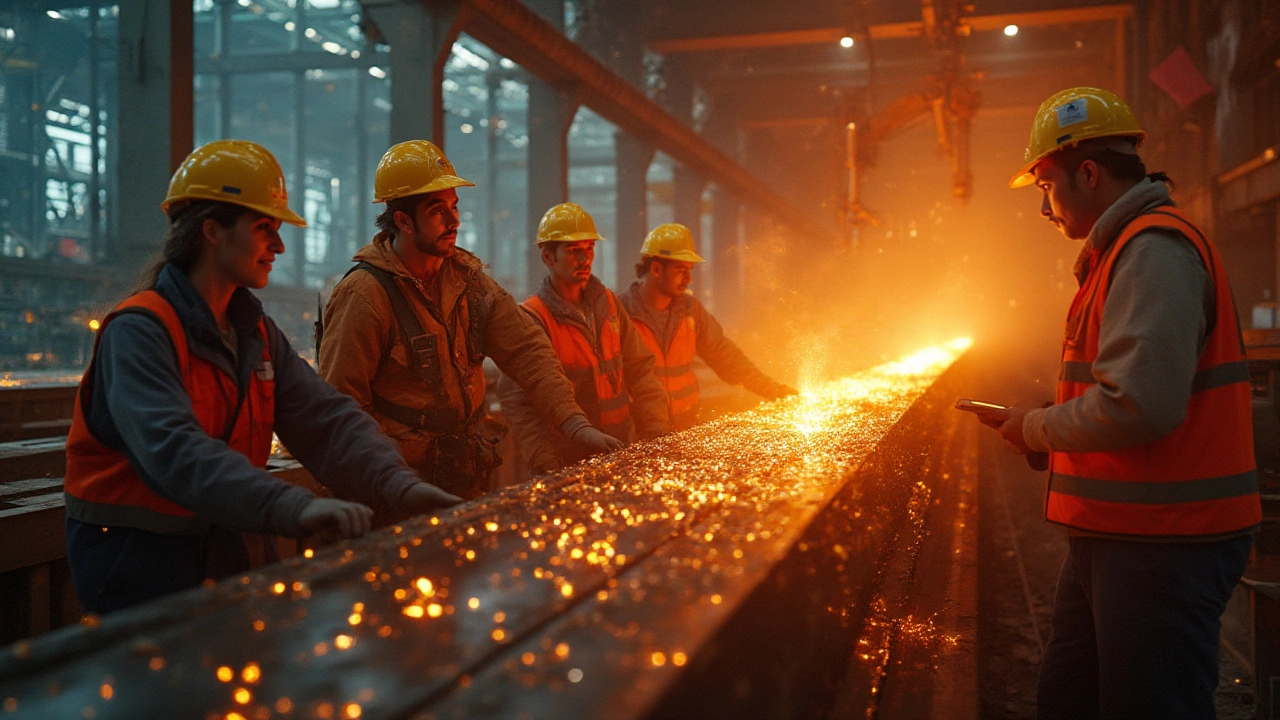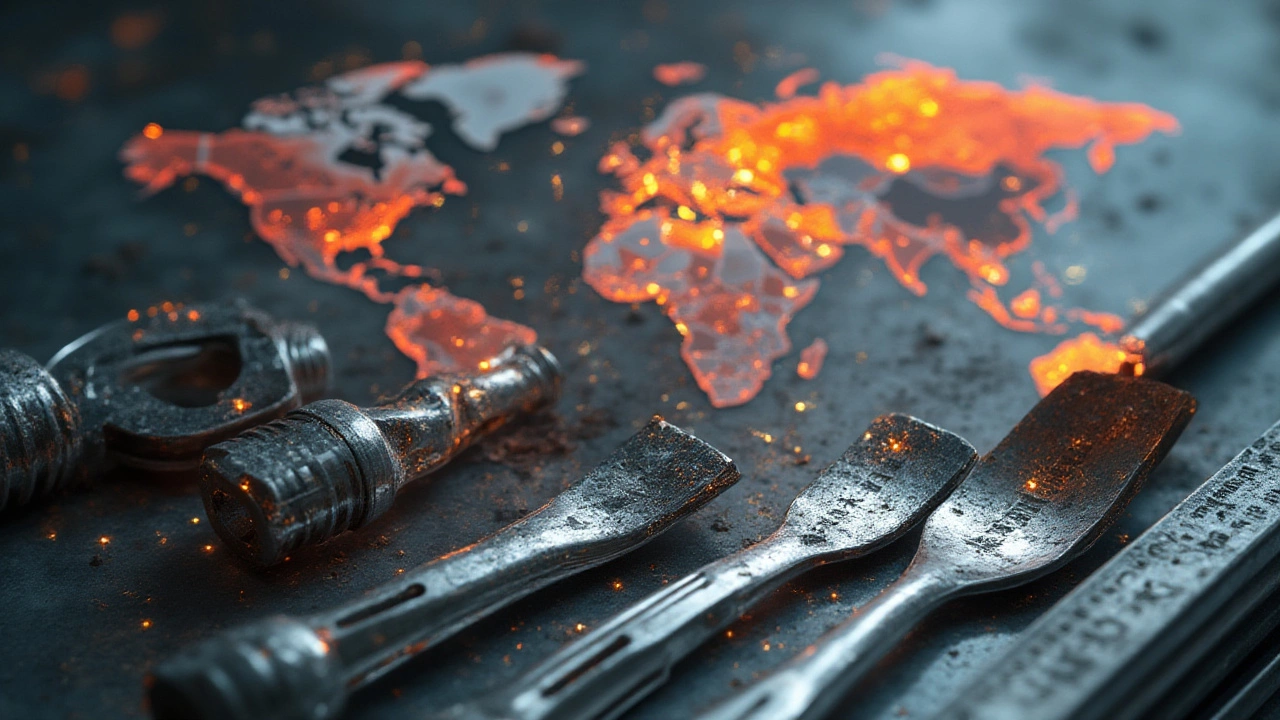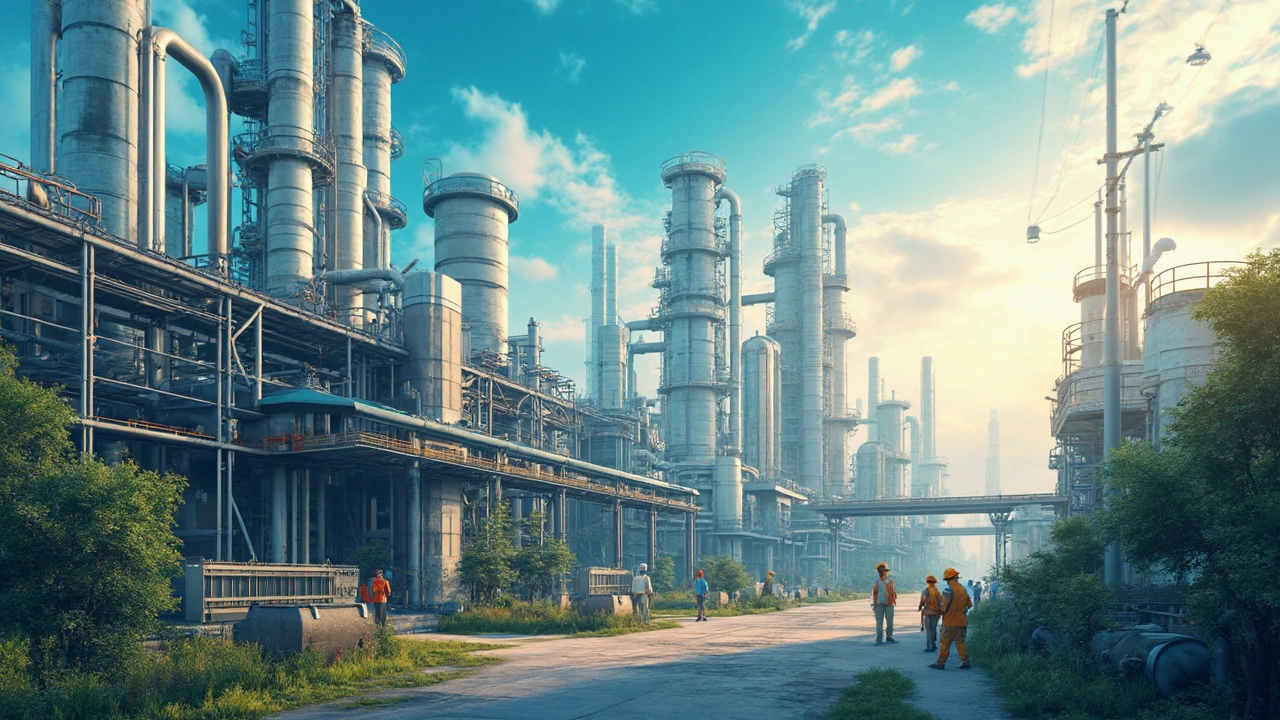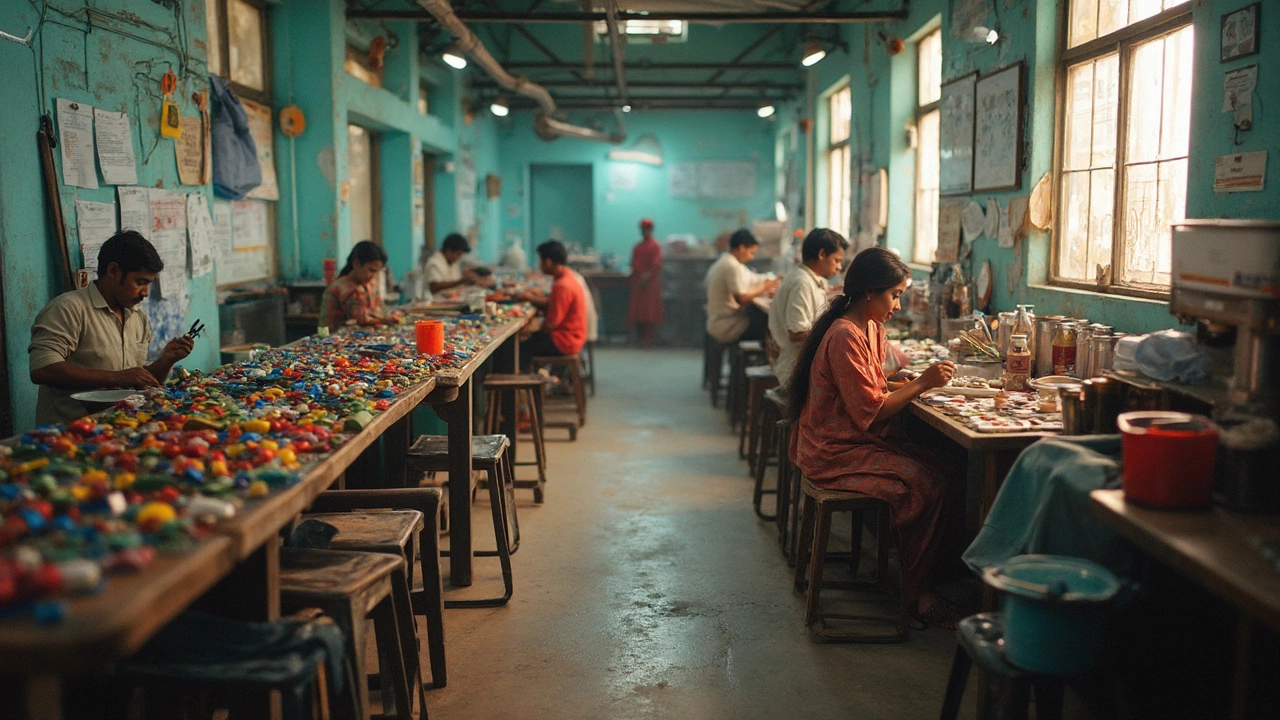Which Country Makes the Best Steel? Comparing Steel Quality Worldwide

Ever wondered why some skyscrapers just seem sturdier or why certain cars manage to last decades while others rust out in just a few years? The answer often boils down to steel quality—something that’s become an obsession for engineers, builders, and manufacturers across the world. But that sparks an age-old debate: what country actually makes the best steel? It’s a question that’s not as straightforward as you might think, because behind every I-beam and car chassis, there’s a battle of science, tradition, and innovation happening—one that stretches from the workshops of Japan to the mills of Sweden and the factories of Germany. Let’s look at how these countries stack up and what makes steel from one place special compared to another.
The Foundation: What Makes Steel 'The Best'?
Before we start crowning champions, it helps to know what even counts as "the best" steel. Steel isn’t just iron; it’s a carefully tuned alloy—mostly iron with a pinch of carbon and sometimes a sprinkle of other stuff, like nickel, manganese, or chromium. The recipe changes based on what you need: super-tough beams for skyscrapers, rust-resistant sheets for cars, or razor-sharp blades for knives. So, when people talk about the “best” steel, they’re often looking at specific features like strength, ductility (that’s bendiness without breaking), resistance to corrosion, longevity, and how easy it is to work with.
But quality isn’t just about the numbers in a lab report. Consistency is huge—nobody wants one batch of flawless steel and the next full of weaknesses. Industry reputation, tech innovation, and even regulations play a big role in separating the good from the great. For example, what engineers call “cleanliness”—meaning steel that’s free of junk or impurities—can be a make-or-break factor, especially in demanding industries like aerospace or high-performance automotive.
Price matters too. The best steel for a luxury car isn’t the same stuff you’ll find in rebar for a highway bridge. So “best” always depends on what you’re building and your budget. That means one country’s steel might be king in advanced electronics, while another’s rules the world of shipbuilding. And yes, there are industry secrets—finishing processes, heat treatments, and custom additives that certain nations have absolutely nailed, which can give their products an edge you won’t easily replicate.
The Global Heavyweights: Who’s Leading the Steel Pack?
So which countries make the real heavy-duty, best steel? Let’s break it down by reputation, numbers, and what people in the industry actually say. The places that most often pop up are Japan, Germany, Sweden, and South Korea, with China, the United States, and India also being massive players—but not always for the same reasons.
Japan has long been the darling of steel connoisseurs. The country’s rise post-WWII saw it quickly leapfrog into high-tech, high-quality production. Japanese companies like Nippon Steel became famous for super-clean, reliably precise steel. They pioneered processes like vacuum degassing and advanced heat treatments, making their steel a go-to for everything from Honda engines to Sony electronics and even those famous kitchen knives that can split a hair. If you ask carmakers and tech giants, “Japanese steel” is almost a brand in itself, known for top-end purity and innovation.
Germany is right up there too. The country’s obsession with engineering shows everywhere, and their steel reflects that. Giants like Thyssenkrupp and Salzgitter pump out ultra-strong, highly graded steel that’s essential for automotive, railways, and heavy machinery. Their attention to detail, tight regulations, and centuries of tradition make German steel some of the most consistent and trusted in the world. Ever noticed how German cars are both sturdy and safe? That’s the steel talking.
Sweden is a bit of a dark horse but deserves a spot on the podium, especially regarding specialist steels. Swedish firm SSAB is world famous for its ultra-high-strength steels and wear-resistant grades. When mining trucks or construction bulldozers need to keep rolling without denting or breaking down, Swedish steel is the top pick. The country also leads in “green steel” initiatives, working on steel that’s made with cleaner energy and fewer emissions.
South Korea might not win on prestige, but it sure wins on output and advanced processes. POSCO, their flagship producer, is ranked as one of the largest and most technically advanced steelmakers globally. Korean steel has powered everything from Hyundai ships to Samsung appliances. It’s reliable, high-volume, and often sits at the sweet spot where quality meets affordability.
China has totally upended the industry with sheer scale. It’s the world’s largest steel producer by a huge margin, churning out over half of all global steel. Chinese mills, especially the state-owned giants, focus mainly on quantity, though there has been a sharp rise in quality and tech investment in recent years. China’s premium products are getting better, but the steel is often geared toward big, infrastructure-heavy projects rather than boutique applications.
The US and India round out the big names—each with strengths. American steel (think U.S. Steel or Nucor) has a reputation for toughness, especially for military and heavy construction. There’s pride in domestic manufacturing and a push for modern automation. India, while known for cheaper steel, is catching up fast in quality, experimenting with new production lines and grades, especially at companies like Tata Steel.
Here’s a snapshot of average crude steel production by the top countries, using World Steel Association 2024 data:
| Country | Production (Million Tonnes, 2024) | Main Strengths |
|---|---|---|
| China | 1,050 | Scale, affordability, wide product range |
| India | 135 | Increasing quality, low cost, growing specialty grades |
| Japan | 90 | Cleanliness, precision, innovation |
| United States | 81 | Durability, specialty steels, automation |
| Russia | 71 | Heavy industry focus, alloys |
| South Korea | 68 | Advanced processing, quality/price balance |
| Germany | 43 | Quality, consistency, engineering excellence |
| Sweden | 5.2 | Specialty/high-strength steels, sustainability |

Secret Weapons: What Sets Top Countries Apart?
The idea that you can pick a “world’s best” steel sounds simple until you try to find it. Steel isn’t just metal—it’s a blend of the right resources, know-how, and sometimes a bit of national pride.
Japan’s secret weapon has always been their dedication to process control. Their mills obsessively filter out impurities—think sulfur, phosphorus, and other trace elements—which can make even high-strength steel brittle or unreliable. Techniques like continuous casting and controlled cooling may sound boring, but they give Japanese steel that signature clean, sharp edge, especially in industries where one slip could mean disaster.
Germany, meanwhile, leans on age-old traditions combined with relentless research and development. German metallurgy is famous for developing some of the world’s best automotive steels—the stuff that lets a BMW handle like a sports car but crash like a tank. They’re leaders in multi-phase steels and advanced lightweight alloys, helping carmakers hit tough efficiency standards without skimping on safety.
Sweden takes a different approach. They have access to some of the cleanest iron ore on the planet, and the Swedish steel industry is tightly knit. Research spills easily from universities to factories, speeding up both innovation and quality control. Their claim to fame is high-toughness steels for heavy industry, and with a smaller footprint, it’s easier for them to adapt to new trends—like hybrid steel made with hydrogen instead of coal, helping to slash carbon emissions.
South Korea and China are all about scale, but Korea in particular invests big in process automation. Smart factories, powered by AI and sensors, mean fewer human errors and more uniform steel. When you need a million tons for a fleet of ships, or just a few thousand tons of precision flat steel for electronics, Korea’s consistency and turnaround are tough to beat. China, for its part, is on a steep learning curve, with firms racing to catch up in quality while still blanketing the globe with volume. Their new investments in "green" steel and tech are starting to close the gap with older rivals.
One fun fact: Swedish companies like SSAB and LKAB are already producing commercial steel using hydrogen, not coal, cutting emissions by over 90%. That could totally change what people value in "best" steel in the coming decades. Japan, on the other hand, is leaning into high value-added steel for robotics and electronic components, which might sound niche, but the demand is exploding as cars and appliances get smarter every year. Germany’s automation and focus on lean manufacturing means their steel is often preferred for high-precision, high-stress gear—aircraft landing gear, for example, will almost always use premium German or Japanese grades.
Different sectors swear by different countries. Luxury knife makers often pick Japanese or Swedish steel for sharpness and toughness. Car makers love German or Japanese for strength and safety. Heavy construction might go for Korean or Chinese, keeping costs down but still getting solid quality thanks to decades of engineering improvements.
Tips for Buyers: Choosing the Best Steel for Your Needs
All this talk about national steel champions is great, but what matters most is picking the right steel for your job. Here are some things you absolutely have to check before placing an order or even deciding what origin you want to go with:
- Know Your Application: Are you building a suspension bridge, a chef’s knife, or a washing machine? Different jobs need totally different steels, and each country shines in certain areas.
- Certifications Are Everything: European, Japanese, and American mills usually follow strict guidelines. Make sure you’re getting what you pay for—ISO, JIS, or DIN certified steel means fewer nasty surprises.
- Think Beyond Price: Buying cheap steel can cost you big in repairs or failures down the road. Evaluate lifecycle costs, not just up-front price tags.
- Check Out Reviews and Case Studies: Most big projects share the brands they use. See what worked (and what didn’t) for companies with needs like yours.
- Visit or Audit Your Supplier: If you’re placing a big order, send your own reps or a trusted third party to the mill. You’ll learn a ton about quality, controls, and reliability.
- Sustainability Is Heating Up: With new laws and consumers demanding eco-friendly options, look for mills leading on emissions and waste—Sweden and Japan are ahead here.
- Lead Times and Volume: If you need huge batches quick, Korea and China are tough to beat. For boutique or specialist projects, Sweden and Germany are your friends.
Smart buyers also pay attention to after-sales support. Countries with strong customer service cultures (like Japan and Germany) can make returns or replacements much easier than dealing with mills halfway around the world. Don’t forget to check how easily you can get spares or additional material later—some brands don’t keep old grades in stock, and you’ll end up waiting months if you run out mid-project.
Finally, watch the trends. Steel is shifting fast, with new tech like hydrogen production, recycled content, and digital tracking of purity levels. The ‘best’ steel today might not be the same champion in five years—especially with major countries like China and India ramping up tech investments and environmental controls. If your job is long-term, pick a partner who can keep up with the times, not just someone who’s cheapest right now.





